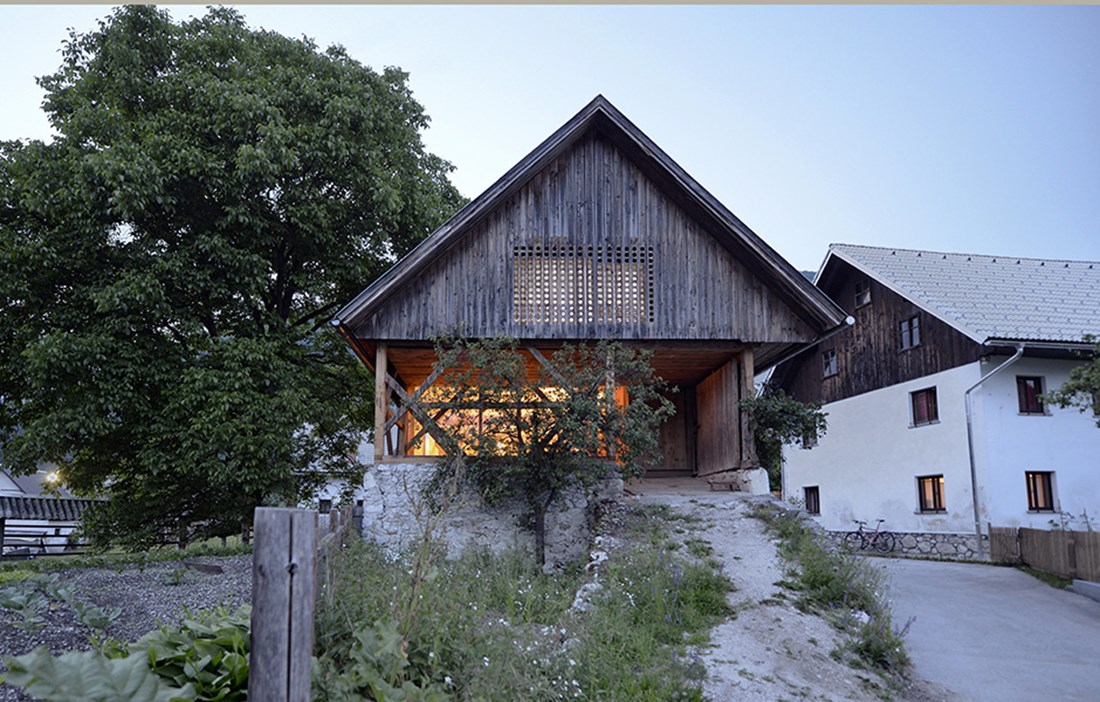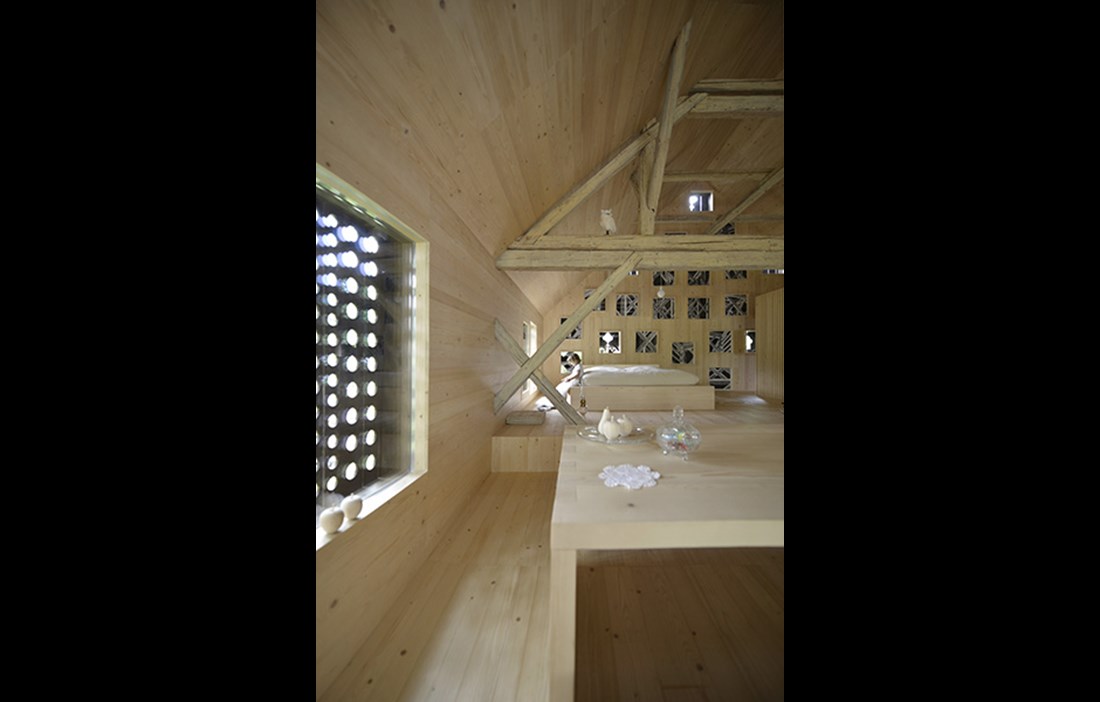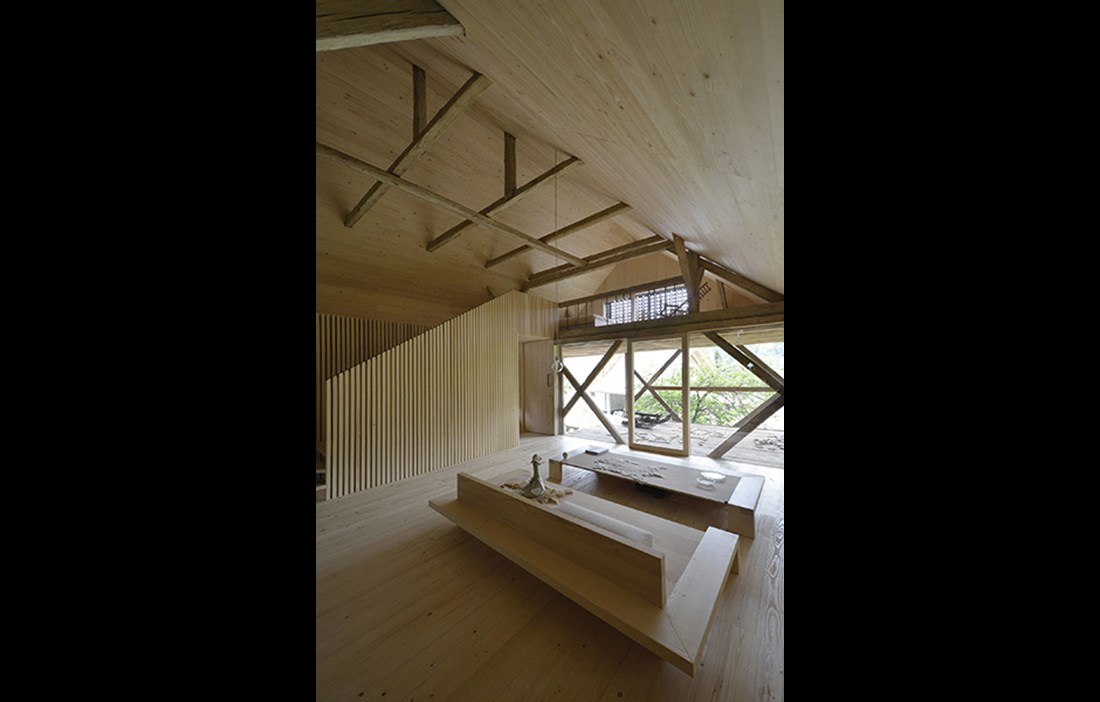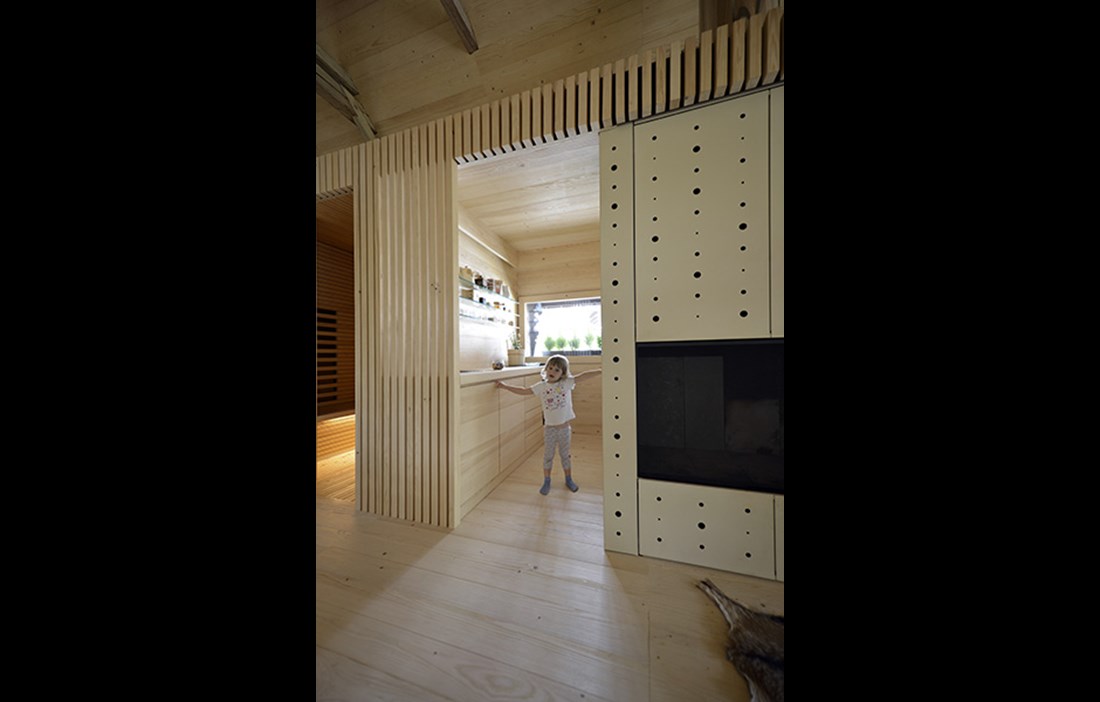BOHINJ LIES JUST an hour’s drive from the Slovenian capital Ljubljana. The beautiful landscape and the convenient distance to the city have caused a ski and holiday resort to grow up around the old mountain village. This means that many of the traditional houses have had to give way to modern showpieces with no sensitivity to their surroundings.
“There is a lack of respect for the architecture that has grown up in the area, not least among the permanent residents,” states Rok Oman, one of the two founders of architectural practice OFIS.
Barns and other simple farm buildings in particular are being completely levelled, according to Rok Oman. When his practice was commissioned to design a holiday home for a colleague, they decided to adopt an alternative approach to the local building tradition – constructing a modern house inside a 200 year-old barn.
“We wanted to show that you can keep this kind of building exactly as it is, while adding a second layer of wood to convert the barn into a home.”
THEY CAME ACROSS THE BARN through local contacts. It had long lain abandoned, a ramshackle affair where the swallows could fly freely through the gaps in the boards. However the load-bearing structure, made from solid spruce beams, was still in good condition. It remains fully visible in the finished holiday home, despite the inside of the barn concealing what can be considered a new house – inside the old shell. Behind the original wooden façade, a moisture barrier was installed, along with a timber-frame structure that was filled with insulation material, in this case ordinary mineral wool. A five centimetre air gap was then left for electrical and other installations, plus a light timber frame for the inner cladding – which is simple spruce tongue and groove with a white stain. The result: a building that is old on the outside and new on the inside.
“All we added is a narrow two-metre section for the sauna, bathroom and kitchen in the east part of the building.”
The furniture, also in spruce, was specially designed and manufactured for the project. It is constructed using a simple half joint, not unlike traditional log joints, so once again there is a link to the local building tradition.
Most of the barns in the area were used in the same way: hay was kept on the upper level, and the lower level was used for vehicles and animals. In this barn, however, vehicles were driven up a stone ramp. This ramp remains and is used to reach the main entrance of the house. Next to the main entrance is a glazed wall – one of few changes to the barn’s external appearance. Extending out from the glass wall is a terrace made from salvaged façade boards, which have been given a new lease of life in a horizontal position rather than vertical.
The architects didn’t want to saw window openings in the old, scarred boards.
“That would have made the new additions far too obvious. However, we did want to bring light in from outside.”
Instead they chose to create dense rows of peepholes in the façade using an ordinary hole saw. The diameter of the holes varies with the width of the boards, and each one is double-glazed.
“Even the rounds of wood that were cut out are still in use, as the client’s children enjoy playing with them,” reports Rok Oman.
CONSTRUCTION WAS FAST – the family was able to move in after just six months. The cost came in at around EUR 100,000, including the installation of electricity, water and sewerage.
“Much less than a new house would have cost,” says Rok Oman. “And at the same time, we’ve shown the locals and everyone investing in property that you can look after old buildings and still do interesting things.”
Text Mårten Janson


























